Are you confused about all the claims around LED horticultural lighting? We hear a lot of questions regarding LEDs such as Are LEDs as good as HID lighting, Will LEDs perform as well as my HID lighting, or How will transitioning from HPS to LED affect my crop? With so many new horticultural LED companies popping up, it can be hard to filter fact from fiction. As manufacturers of horticultural lighting for almost 40 years, we have a lot of experience working with growers in a variety of horticultural applications including LED (light emitting diode) luminaires. As a producer of both HID (high-intensity discharge) and LED technologies, we are not biased toward either technology. We will give our honest opinion on your application. In this article, we hope to debunk some LED myths and paint a clearer picture of the present reality of LED grow light technology.
While LEDs may still seem new to the horticultural lighting market, we have worked with many growers over the last few years who successfully use LEDs for growing. For example, licensed producer RedeCan Pharm, hydroponic tomato grower SoulFood Greenhouse, and leafy green grower DeGoede Farms utilize these lights in their facilities. These growers demonstrate just how LEDs can contribute to high-yielding, high-quality produce. Their success is based on many things – including a well-designed light plan and dialed-in environmental controls.
Below we have outlined some of the things we commonly hear from growers. We also demonstrate just how far LED luminaires have come in terms of light output, efficiencies, and spectral distribution along with showcasing real-world applications in the horticultural industry.
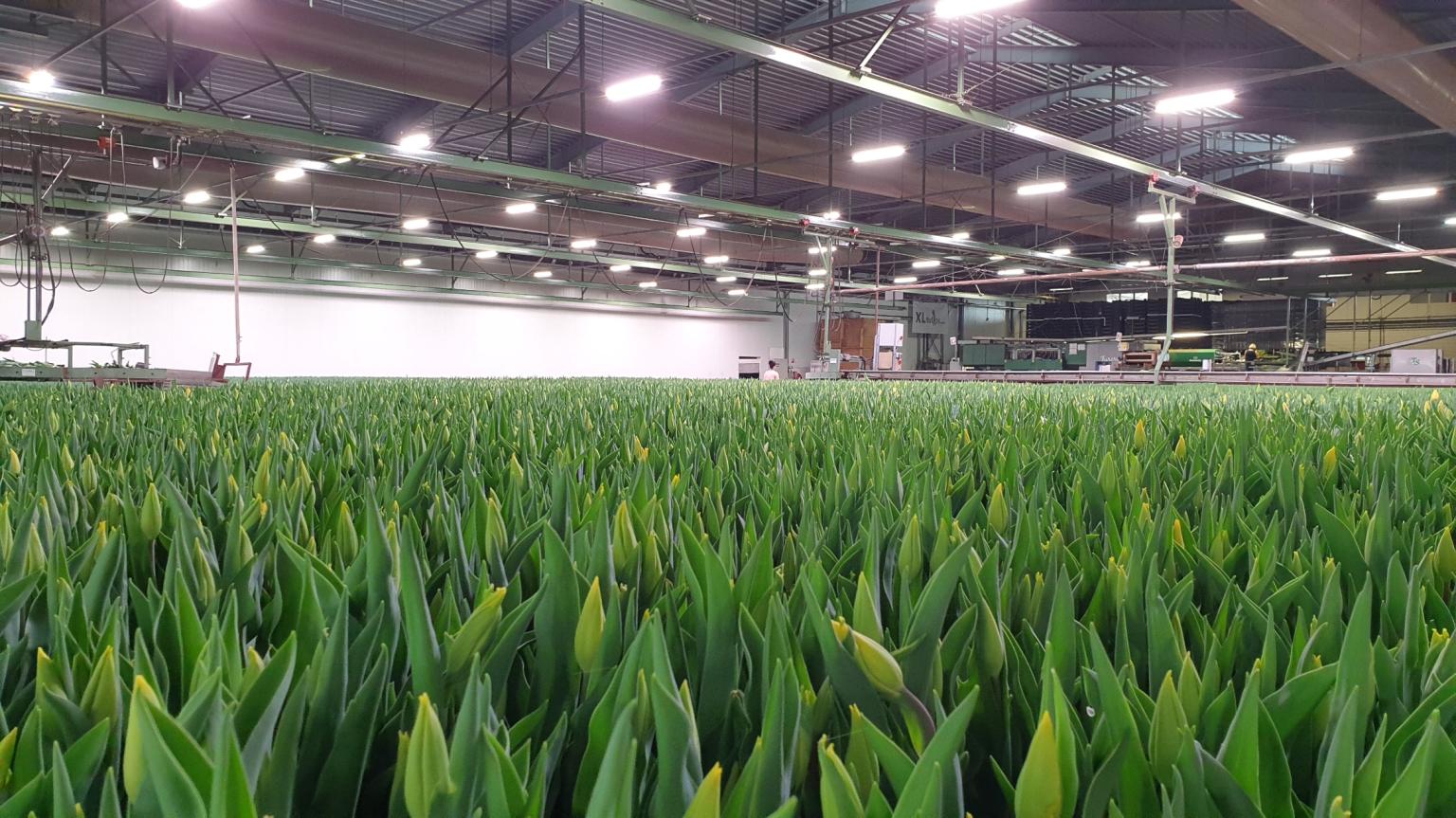
“Can LEDs deliver the same performance as my HID luminaires?”
We frequently hear from growers that they are hesitant to adopt LEDs because they might not perform as well as their HID luminaires. If you have been using HPS technology, you may find it hard to believe that LEDs can drive photosynthesis and provide similar results to using HPS technology. Many growers also believe that because LEDs use less energy, they will not provide the same results as the HPS luminaires they are used to.
LEDs are still relatively new, especially compared to HID lighting. However, many strides have been taken in research and real-world applications, demonstrating that LEDs not only drive photosynthesis and yield but can provide better control over plant morphology (related to spectrum). Horticultural LEDs differ from regular LED technology in that they are specifically tuned to deliver photons in the PAR (photosynthetically active radiation) spectrum. In fact, spectrum-wise, they are more efficient than even HPS or MH luminaires, which deliver a lot of energy outside the PAR range via far-red and infrared radiation (these can also be important for plant growth).
Since we can fine-tune the spectrum of an LED versus an HPS luminaire, we can even target wavelengths that will affect plant morphology (such as internode length) or enhance secondary metabolite activity. This may help increase the terpene and cannabinoid content of cannabis and even boost antioxidants and pigment in crops like peppers or lettuce. While more research is still needed in this area, it is exciting to see how light can help influence crop morphology.
One major difference between HID and LED technologies is the way light is distributed. This is based on the use of reflector technology in HID lighting, which provides far greater control over the light distribution since the reflectors are designed to deliver diffused light in very specific distribution patterns across the crop―from a really wide field of illumination for excellent uniformity to a more focused field of illumination for deeper canopy penetration. LED luminaires, on the other hand, do not use reflectors, traditionally resulting in a far more directional distribution of light, without any diffusion.
If you take a measurement from directly beneath an LED luminaire, you will read an impressively high output of light. However, if you move the PAR sensor in any direction from directly below, the light level decreases. On the other hand, the light from HPSs will be more evenly distributed across a wider area of the crop. It’s therefore important to compare light levels of the entire grow, and not just luminaire to luminaire – as there is no such thing as a one-to-one replacement of HPS by LED. You need more LEDs to create the same light uniformity over the crop as you do for one HPS. This is especially true if you are mounted very close to the crop canopy. The closer you are, the more LEDs you need because a closer light leads to greater shadowing within the crop. This type of directional lighting can have many advantages though depending on the way your facility is set up. Growing vertically allows you to place your luminaires close to the crop without burning while achieving high light intensities. Also, benches spaced wide apart let you take advantage of the directional distribution of light so nothing is not wasted on the floors and targets only the plants themselves. This is why it is always important to have a light plan created by an experienced horticultural lighting company and to follow the guidelines they provide.
With all this being said, the light output of a double-ended 1000W HPS is still higher than the LED when comparing the 1000W to the HortiLED Top 2.0 (2100 μmol/s vs. 1100 μmol/s). Still, the LED luminaire has a higher photon efficiency (2.1 μmol/J vs. 3.3 μmol/J). So, when choosing a lighting system, it may come down to exactly what works for your specific application, including mounting height, bench spacing, and whether you are looking for more energy savings and greater spectral efficiencies.
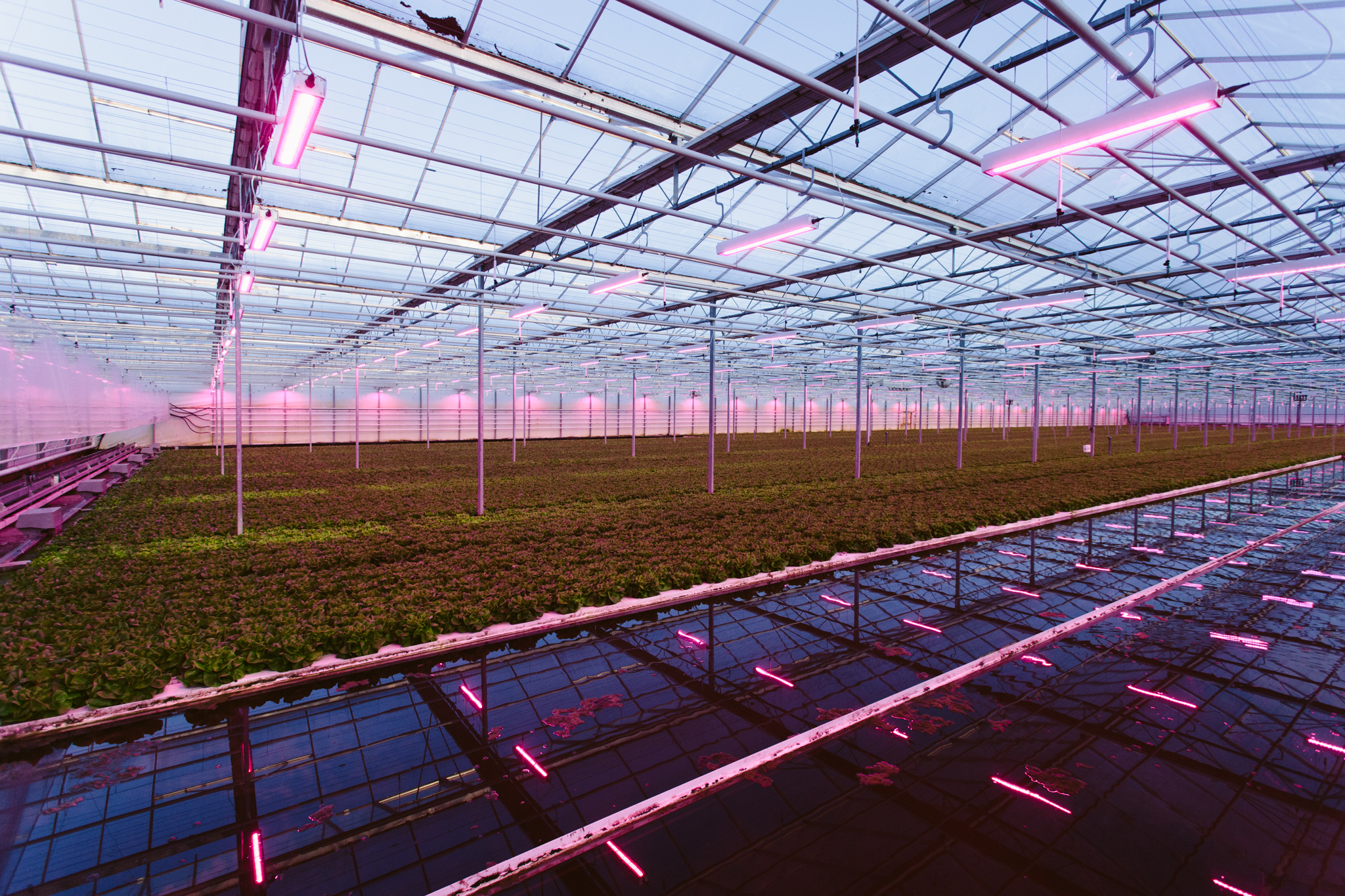
“My neighbor had really good/bad results growing under LEDs. Why would it be any different from me?”
Horticultural LED grow lights have been on the market for only a number of years, so it’s natural to be excited about the possibilities of new technology, but also wary of implementing a new and more expensive lighting system in your growing facility. Comparatively, HID luminaires (high-pressure sodium and metal halide) have been the mainstay in horticultural lighting for over 30 years.
That being said, LEDs are not so new that we don’t have knowledge and experience using them. We have a lot of evidence-based research from universities such as Michigan State and Cornell University. In fact, outside of the laboratory, there have been many real-world application research studies. Greenseal Cannabis in Stratford, Ontario in conjunction with Laval University performed a study comparing the yields and growth of cannabis under LED to HPS luminaires. Greenseal is an indoor vertical cannabis facility so maximizing space is important. Since LEDs can be mounted close to the crop canopy without affecting the plant, they were able to achieve 4 layers of grow space compared to three with the HPS lamps, which can only be mounted 3 feet away from the crop. With the LED treatment, they saw a significant increase in yield compared to the HPS fixtures. The difference could be explained by the fact that the LEDs could be placed close to the plants resulting in higher intensities than the HPS luminaires placed further away thus driving more photosynthesis. This is important to note because there is an exponential decrease in light intensity the further away the light is. In the end, the study determined that light intensity and not spectrum was most important in driving yields. It should, however, be taken into consideration that not all cannabis strains can be grown at high intensities and we always recommend trialing your crop to find out what works best.
In another comparative study done at Meyers Fruit Farms, they installed both P.L. Light Systems’ LED and HPS luminaires in their propagation greenhouse to see if there were any differences in the time it took to cycle out of propagation and any differences in the plants themselves. During propagation, you only need a minimal amount of light intensity to grow plants, so the lights were mounted high in the greenhouse (approximately 12 feet up). Over months of trialing, they found no noticeable differences between the two light treatments. Both luminaire technologies decreased the crop cycle time and increased overall plant mass. Being limited by electricity in their greenhouse, however, they were happy that LEDs could achieve the same results as HPS grow lights so they could install more without drawing too much power or having to install a new transformer.
Another of our customers grows tomatoes and cucumbers year-round in Alberta, Canada. Here, the cold season lasts from November to March, with an average daily high temperature below 38°F, and the natural outdoor DLI values are very low. Tomatoes in particular are very high-light crops—with a DLI requirement of upwards of 22 moles/day for optimal crop quality and yields. So, for this grower (like others in northern latitudes), supplemental lighting is essential to maintain year-round propagation—especially from November through March. Since tomatoes are also heat-loving crops, the grower must heat the greenhouse to maintain optimal leaf temperature. This customer made the conscious decision to install HPS lighting throughout the facility since the advantage is twofold – increased light levels, with radiant heat resulting in better development of the plant tip and also producing a better truss. The grower also likes that he can raise the ambient temperature in the greenhouse far quicker by turning on his lights than waiting for his boiler to crank up the heat.
So, the bottom line is that you should choose the type of lighting that works best for your particular application. What worked or did not work for your neighbor may not be the right solution for your growth.

“I don’t want to work under pink light”
Many people have come to view horticultural LED lighting as the “pink” or “purple” light that has been marketed by many LED horticultural companies. While numerous growers still opt to use this blue/red spectrum of light for plant growth because it offers the best efficacy, many growers now choose to use full spectrum “white” LEDs because it is easier to work under and provides a more even distribution of photons within the PAR range.
The light between 400 and 700 nanometers on the electromagnetic spectrum, known as PAR (photosynthetically active radiation), are wavelengths that contribute to photosynthetic activity. Within the PAR range, blue (400-500nm) and red (600-700nm) are known to have the highest photosynthetic efficiency. Because of this, many manufacturers of LED luminaires have created a red/blue light that produces a magenta or pink-colored light. While this combination may be good for plants and can work in greenhouse applications when growers use supplementary lighting, it is not ideal in sole-source lighting applications where the pink hue can make it hard to work in and assess plant health. For that reason, many growers do not want LED luminaires installed.
To overcome working in the pink light, many companies now manufacture white or full spectrum LEDs. These grow lights include red, blue, and green wavelengths, which are highly efficient for plant photosynthesis but appear white to people. And by providing a complete PAR spectrum in facilities with a complete lack of natural light, plants can use exactly the wavelengths they need, when they need them. The white light also makes for a more pleasant work environment and makes plant evaluation and assessment easier for workers.
For more information on white or full spectrum LEDs check out our newest high-efficiency HortiLED Top luminaire.
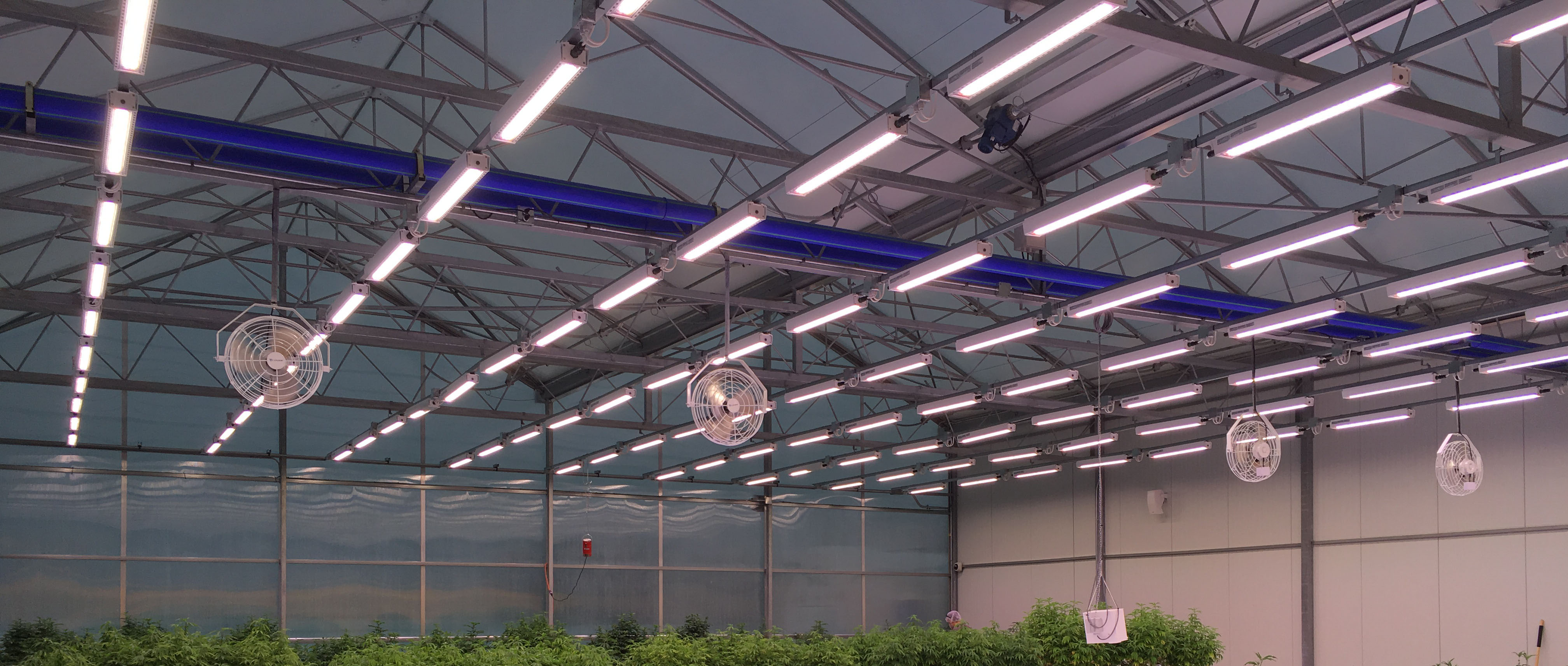
“How will LEDs affect my growing environment?”
If you are already accustomed to using HPS luminaires, you are also used to the radiant heat they provide. HPS luminaires affect the leaf and ambient air temperature within your growing operation from the extra infrared radiation they put out. For crops like tomatoes or cannabis, this heat helps maintain proper growth and development.
However, LEDs differ from HID technology in that they do not create any heat. This can have many advantages depending on your application, such as being able to mount lights close to the crop without burning as well as maintaining lower temperatures within the grow facility. This can also help by further reducing energy costs for indoor growing facilities in warm locations that would need to use AC or other cooling methods to control the temperature. However, if you require a higher temperature for growing, you will need to make up for the lack of heat through extra natural gas or electricity. If plants get too cool, especially in the winter, it can affect transpiration, growth and morphology, nutrient uptake, and CO2 uptake. Often the energy savings you would see from LEDs will be lost through the extra heat you will need to supply.
Transitioning to LEDs may also affect other areas of your growing operation including water management. Often growers will require less water under LEDs compared to HPS luminaires because they are not losing as much water through transpiration. Nutrient uptake can also be affected and should be monitored regularly for any decrease or increase in nutrients. For these reasons, we recommend trialing your crop before any large installation of LEDs.
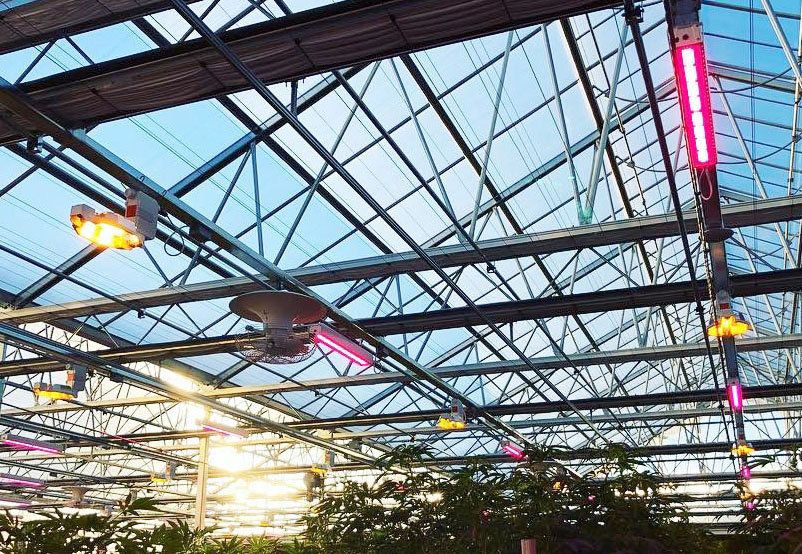
“Can I dim my luminaires?”
Imagine being able to dim your lights on command or have them decrease or increase light intensity in accordance with the decrease in natural sunlight. With LEDs, you can dim your lights, unlike HPS lamps which become less efficient if dimmed.
Dimming controls can be linked to horticultural software to automate light schedules. Even better, if you have a PAR sensor installed in your greenhouse, you can have the lights adjust with the intensity of the sunlight outdoors. This has many advantages, including ensuring your plants are always receiving the recommended DLI (daily light integral), reducing energy consumption, as well saving you time without having to manually change the luminaires yourself.
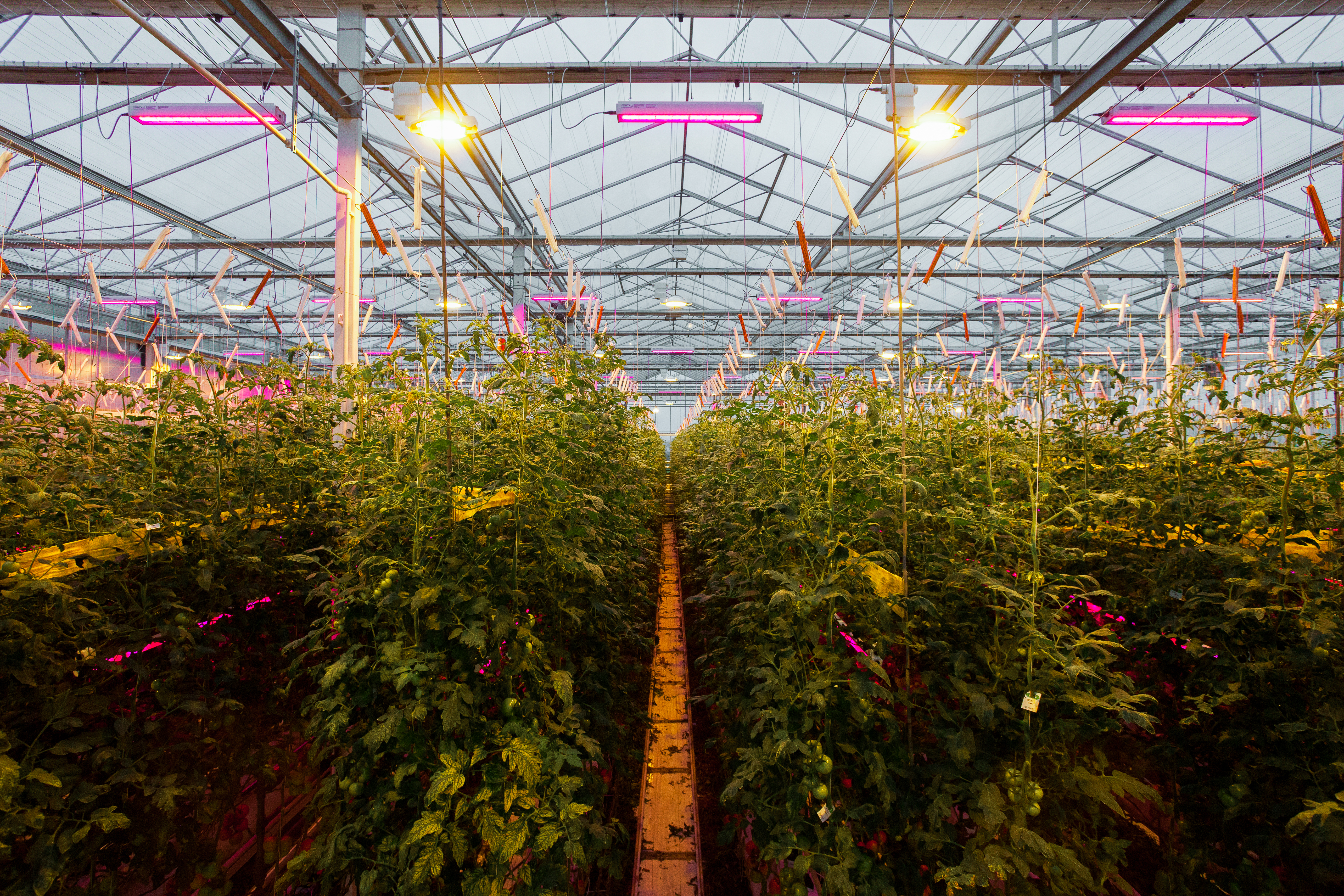
Final thoughts
Horticultural LED luminaires have evolved rapidly over the last few years and can indeed provide the same light intensity and yields in a growing operation if planned correctly. If you are thinking about transitioning your crops from HPS to LED, try and set up a trial area if you can. This way you can monitor changes such as watering and nutrient management, as well as other environmental changes like temperature. A common mistake during light planning is poor light layouts that do not consider the most efficient positions and mounting heights. This will lead to inefficiencies in your growing space. At P.L. Light Systems, we have experienced lighting technicians who create comprehensive light plans based on the facility and needs of the customer.
If making the switch entirely to LEDs seems daunting, you could always opt for a hybrid LED-HID lighting system. A hybrid lighting system uses both technologies to deliver the ideal balance between diffuse light distribution and spectral efficiencies. It also allows the flexibility to take advantage of the radiant heating from the HPS lighting and extend the supplemental lighting period into the spring by using the LED lights only when outside temperatures and daylight hours increase. A hybrid system also reduces the initial capex and can allow a grower to further manage costs by maintaining their existing infrastructure.
As you can see, LED horticultural lighting technology has come a long way as more growers opt to use LEDs for numerous reasons and are seeing benefits, such as increased yield, improved energy consumption, better space efficiencies, and controlling plant morphology. Learn more by visiting our website at www.pllight.com or check out the latest of our high-efficiency LED luminaires.


